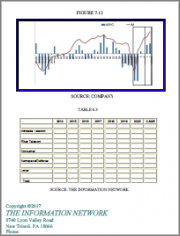
|
시장보고서
상품코드
1483213
3D 프린팅 : 재료 및 장비의 기회, 동향 및 시장3D Printing: Material and Equipment Opportunities, Trends, and Markets |
||||||
소개
3D 프린팅 산업은 다양한 분야의 제조 및 설계 프로세스에 혁명을 일으켜 전례 없는 유연성, 효율성 및 맞춤성을 제공합니다.
이 보고서는 이 혁신적인 3D 프린팅 기술을 종합적으로 분석하여 최근 재료 및 장비 관련 개발 성과, 시장 최신 상황, 전략적 과제에 대해 조사했습니다. 또한, 시장의 주요 촉진요인과 성장 및 투자에 대한 전략적 기회를 살펴봅니다.
3D 프린팅 기술 동향
3D 프린팅 산업은 재료와 장비 모두에서 큰 발전을 목격하고 있으며, 이는 응용 분야를 확장하고 시장 성장을 가속하고 있습니다. 가장 주목할 만한 트렌드 중 하나는 새롭고 개선된 프린팅 재료의 개발입니다. 초기에는 플라스틱이 주류를 이루었던 3D 프린팅 재료는 금속, 세라믹, 복합재료 등으로 다양해지고 있으며, PEEK 및 PEKK와 같은 고성능 열가소성 플라스틱은 강도와 생체적합성으로 인해 항공우주 및 의료 분야에서 인기를 얻고 있습니다. 또한, 티타늄 및 알루미늄과 같은 금속 분말의 사용은 자동차 및 항공우주와 같이 견고하고 가벼운 부품을 필요로 하는 산업에서 확대되고 있습니다.
또 다른 중요한 트렌드는 3D 프린팅 장비의 진화입니다. 적층 가공 기술의 발전으로 3D 프린터의 정확도, 속도, 확장성이 향상되고 있습니다. 선택적 레이저 소결(SLS), 스테레오 리소그래피(SLA), 직접 금속 레이저 소결(DMLS)과 같은 첨단 기술이 3D 프린팅의 한계를 넓혀가고 있습니다. 적층 가공 공정과 감산 제조 공정을 결합한 하이브리드 제조 시스템도 등장하여 복잡한 부품 제조에 있어 더 높은 유연성과 효율성을 제공합니다.
3D 프린팅과 인더스트리 4.0 기술의 통합은 제조업의 환경을 더욱 변화시키고 있으며, IoT, AI, 머신러닝을 3D 프린팅 공정에 도입하여 실시간 모니터링, 예지보전, 생산 워크플로우의 최적화를 가능하게 합니다. 이러한 스마트 제조 기능은 3D 프린팅의 효율성과 신뢰성을 향상시켜 시제품 제작뿐만 아니라 대규모 생산에도 효과적인 대안이 되고 있습니다.
지속가능성 또한 3D 프린팅 업계의 핵심 화두로 떠오르고 있습니다. 주문형 부품 생산이 가능하기 때문에 폐기물을 줄이고 기존 제조 방식에 따른 환경적 영향을 최소화할 수 있습니다. 또한, 재활용 가능한 인쇄 재료와 생분해성 인쇄 재료의 발전은 업계가 세계 지속가능성 목표에 부합하고 환경 친화적인 기업과 소비자들에게 어필할 수 있도록 돕고 있습니다.
목차
제1장 서론
제2장 3D 프린팅 개요
- 3D 프린팅의 이점
- 3D 프린팅의 한계
- 3D 시장 분류
- 설계
- 현재 제조 공정 치환
- 개별화된 가정용 3D 프린팅
- 재료
- 각 지역 동향
- 유럽
- 일본
- 중국
- 한국
- 세계의 연구개발(R&D)
제3장 시장 분석
- 서론
- 3D 프린팅 업계
- 각 지역의 3D 프린팅 산업
- 3D 프린터 예측
- 3D 프린팅 및 서비스 업체 예측
- 3D 프린팅 산업 : 용도별
- 재료
제4장 기술적 과제와 동향
- 선택적 레이저 소결(SLS)
- 직접 금속 레이저 소결(DMLS)
- 선택적 레이저 용해(SLM)
- 스테레오 리소그래피(SLA)
- 열용해 적층법(FDM)
- (FFF(열용해 적층법))
- 레이저 분말 성형(LPF)
- 폴리 제트 기술
- MJF(Multi Jet Fusion)
- DLP(디지털 광처리)
- 재료 분사법
제5장 기기 공급업체
- 서론
- Prototyping
- Mass Customization
- 주요 프린터 제조업체 개요
- 3D Systems
- Stratasys
- ExOne Company
- ProtoPlant
- Mark Forged
- Voxeljet AG(독일)
- EOS GmbH(독일)
- Arcam AB(스웨덴)
- EnvisionTEC GmbH(독일)
- Renishaw plc(영국)
- SLM Solutions GmbH(독일)
- Concept Laser GmbH(독일)
- Hoganas AB(스웨덴)
- Materialise NV(벨기에)
- Mcor Technologies Ltd.(아일랜드)
- Xact Metal
- Cincinnati Inc.
- Mitsubishi
- Beijing TierTime(중국)
- Shaanxi(중국)
- Digital Wax Systems(DWS)(이탈리아)
- Blue Printer
- Organovo
- Shapeways(네덜란드)
- Hewlett-Packard
- XYZprinting
- Evolve Additive Solutions
- Origin
- Carbon3D
- Desktop Metal
- Metal X
- 제조업체 리스트 : 프린터 유형별
- 열용해 적층법(FDM)
- 잉크젯 방식
- 레이저 분말 성형(LPF) 및 관련 기술
- 포토폴리머 기반 방법
- 선택적 레이저 소결(SLS)
- 스테레오 리소그래피(SLA)
- 금속 프린터
- 기기 공급업체·유형·가격
- 오픈소스(RepRaps)
제6장 재료와 재료 공급업체
- 플라스틱/열가소성 플라스틱
- PLA(폴리유산)
- ABS(아크릴로니트릴 부타디엔 스티렌)
- 나일론
- ASA(아크릴로니트릴 스티렌 아크릴레이트)
- PVA(폴리비닐 알코올 플라스틱)
- 고성능·열가소성 플라스틱(PEEK, PEKK, PEK)
- 폴리카보네이트 재료
- 고충격성 폴리스티렌 HIPS 재료
- 열가소성 폴리우레탄
- 폴리프로필렌
- PET 및 기타 생분해성 물질
- 투명 플라스틱 재료
- 분말
- 폴리아미드
- 아르미드
- 수지
- 금속
- 세라믹
- 첨단 재료
- Conductive Carbomorph
- 그래핀
- 나노재료
- 독립계 재료 인프라
- 설비 공급업체 계 재료 인프라
제7장 활용 영역
- 서론
- 일렉트로닉스/하이테크
- 태양광발전
- RFID
- 배터리
- LED
- 디지털 텍스타일
- OLED 조명 및 디스플레이
- 스마트 윈도우
- 인쇄용 센서
- 의료
- 서론
- 골격
- 치과
- 의지
- 기브스
- 보청기
- 조직
- 맞춤형 진단 및 약물전달
- 의료용 마이크로 팩토리
- 자동차
- 항공우주
- 소비자 제품
- 군/방위
- 산업 제품
- 교육
Introduction
The 3D printing industry is revolutionizing manufacturing and design processes across various sectors, offering unprecedented flexibility, efficiency, and customization. Our report, "3D Printing: Material and Equipment Opportunities, Trends, and Markets," provides a comprehensive analysis of this transformative technology, delving into the latest advancements in materials and equipment, emerging market trends, and strategic challenges. This detailed report is crafted for industry professionals seeking to understand the key drivers of the 3D printing market and to identify strategic opportunities for growth and investment.
Trends in 3D Printing Technology
The 3D printing industry is witnessing significant advancements in both materials and equipment, which are expanding its applications and driving market growth. One of the most notable trends is the development of new and improved printing materials. Initially dominated by plastics, the material landscape in 3D printing has diversified to include metals, ceramics, and composite materials. High-performance thermoplastics like PEEK and PEKK are gaining popularity in aerospace and medical applications due to their strength and biocompatibility. Additionally, the use of metal powders, such as titanium and aluminum, is expanding in industries that require robust and lightweight components, including automotive and aerospace.
Another key trend is the evolution of 3D printing equipment. Advances in additive manufacturing technologies are enhancing the precision, speed, and scalability of 3D printers. Selective laser sintering (SLS), stereolithography (SLA), and direct metal laser sintering (DMLS) are among the cutting-edge techniques that are pushing the boundaries of what can be achieved with 3D printing. Hybrid manufacturing systems, which combine additive and subtractive processes, are also emerging, offering greater flexibility and efficiency in producing complex parts.
The integration of 3D printing with Industry 4.0 technologies is further transforming the manufacturing landscape. The adoption of IoT, AI, and machine learning in 3D printing processes enables real-time monitoring, predictive maintenance, and optimized production workflows. These smart manufacturing capabilities are enhancing the efficiency and reliability of 3D printing, making it a viable option for large-scale production runs as well as prototyping.
Sustainability is also becoming a central focus in the 3D printing industry. The ability to produce parts on-demand reduces waste and minimizes the environmental footprint associated with traditional manufacturing methods. Additionally, advancements in recyclable and biodegradable printing materials are aligning the industry with global sustainability goals, appealing to environmentally-conscious businesses and consumers.
The Need to Purchase This Report
For businesses and professionals involved in or entering the 3D printing market, understanding the latest technological trends and market dynamics is crucial for making strategic decisions. This report provides an in-depth analysis of the opportunities and challenges in 3D printing materials and equipment, offering valuable insights into the factors driving market growth and innovation. By purchasing this report, stakeholders will gain a comprehensive understanding of the current state of the 3D printing industry, including detailed market forecasts and competitive landscape evaluations.
Our report offers strategic recommendations for leveraging 3D printing technologies to enhance product development, manufacturing efficiency, and market positioning. It includes an exhaustive examination of key industry players, technological advancements, and emerging market opportunities. Companies looking to invest in 3D printing or expand their capabilities will find this report indispensable for identifying growth areas, optimizing their strategies, and staying ahead of the competition.
In conclusion, "3D Printing: Material and Equipment Opportunities, Trends, and Markets" is an essential resource for industry professionals, engineers, researchers, and business leaders. It provides a thorough exploration of the technological advancements and market trends shaping the 3D printing industry, equipping readers with the knowledge needed to navigate this rapidly evolving field. This report is designed to inform strategic planning, investment decisions, and the development of innovative 3D printing solutions that will drive future success in the global market.
Table of Contents
Chapter 1. Introduction
Chapter 2. 3D Printing Overview
- 2.1. Benefits Of 3D Printing
- 2.2. Limitations Of 3D Printing
- 2.3 3D Market Segmentation
- 2.3.1. Design
- 2.3.2. Replacement Of Current Manufacturing Processes
- 2.3.3. Personalized And Home 3D Printing
- 2.3.4. Materials
- 2.4. Regional Activities
- 2.4.1. Europe
- 2.4.2. Japan
- 2.4.3. China
- 2.4.4. Korea
- 2.4.5. Global Research And Development
Chapter 3. Market Analyses
- 3.1. Introduction
- 3.2. 3D Printing Industry
- 3.3. 3D Printing Industry By Geographic Region
- 3.4. 3D Printer Forecast
- 3.5. 3D Printing Service Bureau Forecast
- 3.6. 3D Printing Industry By Application
- 3.7. Materials
Chapter 4. Technology Issues and Trends
- 4.1. Selective laser sintering (SLS)
- 4.2. Direct metal laser sintering (DMLS)
- 4.4. Selective Laser Melting (SLM)
- 4.4. Stereolithography (SLA)
- 4.5. Fused Deposition Modeling (FDM)
- [Fused Filament Fabrication (FFF)]
- 4.6. Laser Powder Forming (LPF)
- 4.7. PolyJet Technology
- 4.8. Multi Jet Fusion
- 4.9. Digital Light Processing (DLP)
- 4.10. Material Jetting
Chapter 5. Equipment Suppliers
- 5.1. Introduction
- 5.1.1. Prototyping
- 5.1.2. Mass Customization
- 5.2. Profiles Of Major Printer Manufacturers
- 5.2.1. 3D Systems
- 5.2.2. Stratasys
- 5.2.3. ExOne Company
- 5.2.4. ProtoPlant
- 5.2.5. Mark Forged
- 5.2.6. Voxeljet AG (Germany)
- 5.2.7. EOS GmbH (Germany)
- 5.2.8. Arcam AB (Sweden)
- 5.2.9. EnvisionTEC GmbH (Germany)
- 5.2.10. Renishaw plc (UK)
- 5.2.11. SLM Solutions GmbH (Germany)
- 5.2.12. Concept Laser GmbH (Germany)
- 5.2.13. Hoganas AB (Sweden)
- 5.2.14. Materialise NV (Belgium)
- 5.2.15. Mcor Technologies Ltd. (Ireland)
- 5.2.16. Xact Metal
- 5.2.17. Cincinnati Inc.
- 5.2.18. Mitsubishi
- 5.2.19. Beijing TierTime (China)
- 5.2.20. Shaanxi (China)
- 5.2.21. Digital Wax Systems (DWS) (Italy)
- 5.2.22. Blue Printer
- 5.2.23. Organovo
- 5.2.24. Shapeways (The Netherlands)
- 5.2.25. Hewlett-Packard
- 5.2.26. XYZprinting
- 5.2.27. Evolve Additive Solutions
- 5.2.28. Origin
- 5.2.29. Carbon3D
- 5.2.30. Desktop Metal
- 5.2.31. Metal X
- 5.3. Manufacturers By Printer Type
- 5.3.1. Fused Deposition Modeling
- 5.3.2. Inkjet Methods
- 5.3.3. Laser Powder Forming And Related Technologies
- 5.3.4. Photopolymer-Based Methods
- 5.3.5. Selective Laser Sintering
- 5.3.6. Stereolithography
- 5.3.7. Metal Printers
- 5.3.7.1. Power Bed Fusion Metal 3D Printers
- 5.3.7.2. Binder Jetting Metal 3D Printers
- 5.3.7.3. Direct Energy Deposition Metal 3D Printers
- 5.3.7.4. Material Jetting Metal 3D Printers
- 5.4. Equipment Suppliers, Type, And Prices
- 5.4. Open Source (RepRaps)
Chapter 6. Materials And Materials Suppliers
- 6.1. Plastics/Thermoplastics
- 6.1.1. PLA (Polylactic Acid)
- 6.1.2. ABS (Acrylonitrile butadiene styrene)
- 6.1.3. Nylon
- 6.1.4. ASA (Aacrylonitrile styrene acrylate)
- 6.1.5. PVA (Polyvinyl Alcohol Plastic)
- 6.1.6. High Performance Thermoplastics (PEEK, PEKK, PEK)
- 6.1.7. Polycarbonate Materials
- 6.1.8. High Impact polystyrene HIPS Materials
- 6.1.9. Thermoplastic Polyurethane
- 6.1.10. Polypropylene
- 6.1.11. PET and Other Biodegradables
- 6.1.12. Transparent Plastic Materials
- 6.2. Powders
- 6.2.1. Polyamide
- 6.2.2. Alumide
- 6.2.3. Resins
- 6.2.3.1. High Detail Resin
- 6.2.3.2. Paintable Resin
- 6.2.3.3. Transparent Resin
- 6.2.4. Metals
- 6.2.4.1. Titanium
- 6.2.4.2. Stainless Steel
- 6.2.4.3. Bronze
- 6.2.4.4. Nitinol
- 6.2.4.5. Aluminum
- 6.2.4.6. Cobalt
- 6.2.4.7. Nickel
- 6.2.4.8. Copper
- 6.2.4.9. Precious Metals
- 6.2.4.10. Refractory Metals
- 6.2.5. Ceramics
- 6.3. Advanced Materials
- 6.3.1. Conductive Carbomorph
- 6.3.2. Graphene
- 6.3.3. Nanomaterials
- 6.4. Third Party Material Infrastructure
- 6.5. Equipment Supplier Material Infrastructure
Chapter 7. Applications
- 7.1. Introduction
- 7.2. Electronics/High-Tech
- 7.2.1. Photovoltaics
- 7.2.2. Radio Frequency Identification (RFID)
- 7.2.3. Batteries
- 7.2.4. LEDs
- 7.2.5. Digital Textiles
- 7.2.6. OLED Lighting And Displays
- 7.2.7. Smart Windows
- 7.2.8. Printed Sensors
- 7.3. Medical
- 7.3.1. Introduction
- 7.3.2. Bones
- 7.3.3. Dental
- 7.3.4. Prosthetics
- 7.3.5. Casts
- 7.3.6. Hearing Aids
- 7.3.7. Tissue
- 7.3.8. Personalized Diagnostics & Drug Delivery
- 7.3.9. Medical Microfactories
- 7.4. Automotive
- 7.5. Aerospace
- 7.6. Consumer Products
- 7.7. Military/Defense
- 7.7. Industrial Products
- 7.9. Educational



















